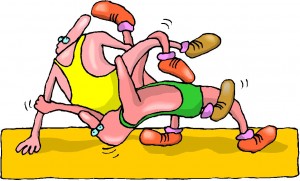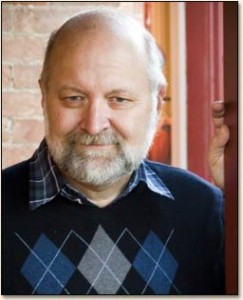We can build worlds, create interesting characters, have background information and personality/motivational analysis that fills a book. After studying how to create characters, how to make them interesting, unique and multidimensional, we must somehow bring them to life and make them as real to the reader as a living, breathing human being. Yet how can this be done?
 It’s all about relationships. Characters come alive when we see them in relationship. Their interactions (actions and reactions) reveal their innermost secrets, their fears, their world view, their values. Just like us, they act and react to those around them – life is not lived in a vacuum. That’s why the background work and world building are so important. What is the society’s prevailing code of ethics or conduct? Where does the character live – the social and survival norms are different from a crowded city in first world or third world economies, rural or urban settings, earth, Mars or a fantasy world. This determines what is important to the character – what she values or abhors.
It’s all about relationships. Characters come alive when we see them in relationship. Their interactions (actions and reactions) reveal their innermost secrets, their fears, their world view, their values. Just like us, they act and react to those around them – life is not lived in a vacuum. That’s why the background work and world building are so important. What is the society’s prevailing code of ethics or conduct? Where does the character live – the social and survival norms are different from a crowded city in first world or third world economies, rural or urban settings, earth, Mars or a fantasy world. This determines what is important to the character – what she values or abhors.
We interact with and react to our families, our pets, our loves, those we loathe, those we casually know and those we don’t even know but have a strong reaction to. A strong reaction to strangers? Think about it. Do you slam the phone on the telemarketer or do you make friends with that person? Do you disregard or mock political propaganda from the party you don’t support or do you take the time to befriend a supporter and understand their views? In both examples, the interaction with strangers is at different ends of the spectrum – from blatant disregard to embracing their humanity. Most of us are somewhere in between. The way we choose to interact with people in these situations is determined by what we value, what motivates us and what issues are pressing in on us. Knowing where your character lies on the value spectrum will make it easier to write believable character interactions. Is your character determined or unsure? Have faith in life or believe it can’t be trusted? Accept or reject change?
For example, in a self-help book on relationships (those are gold mines for writers!) titled Love is a Many Splintered Thing by Patricia H. Rushford, we follow Samantha and David as they journey from the honey moon stage to near  divorce. The fight scenes, simply done for illustrative purposes, are quite compelling. In one scene, we learn that David has manipulated Samantha’s computer dating data sheet so that their scores will jive. Samantha is so furious that she wants nothing to do with David. David is hurt and upset. He had fallen in love with her the moment he saw her and didn’t want to trust a machine with the rest of his life.
divorce. The fight scenes, simply done for illustrative purposes, are quite compelling. In one scene, we learn that David has manipulated Samantha’s computer dating data sheet so that their scores will jive. Samantha is so furious that she wants nothing to do with David. David is hurt and upset. He had fallen in love with her the moment he saw her and didn’t want to trust a machine with the rest of his life.
So, why did Samantha have such a strong reaction to David’s action and why did he manipulate the data? The answers lie in their backgrounds, in those deep dark corners that are so easy to ignore yet which compel us to act as we do. As Rushford explains: David is a man’s man, always in control and is uncomfortable with the feelings Sam has awakened in him. He has tried to be the kind of man he thought his father (now dead) would have wanted him to be but David feels he has never quite succeeded. Now once again, in his relationship with Sam, he hasn’t quite succeeded. Samantha, on the other hand, comes from a childhood of abuse and neglect and so resists love for fear of abandonment. At times her emotional needs exceed her ability to reason.
Understanding fears and aspirations this deeply means a writer can stay true to the core of who their characters are. That then makes their actions and reactions more consistent and true to their nature as they interact with other characters. What about dialogue and body language? Both are important and once again, are part of knowing your character well. Is her language terse? Can he say what he means? She talks of feelings while he refers to car manuals. Is her manner aloof, open or frustratingly neutral? Is there a combination of warmth and cold, efficiency and aloof caring, that is both appealing and frustrating? How does each character react to how the other speaks let alone to what he or she says? Thinking through those dynamics creates most interesting interactions.
There is one major stumbling block to writing genuine character interactions. That is unconsciously slipping into your own value system and not remaining true to your character. That’s when characters and scenes become one dimensional. Personally, I hate conflict. I prefer to be the peacemaker. Knowing that about myself gives me the awareness I need to let my characters be themselves in all their gore and glory. The best writing advice I ever received was permission to be cruel, to ramp up the stakes, to let my characters sweat, squirm and yes, fight.
 By knowing our characters intimately, from their deepest darkest fears to their speech patterns, we can totally abandon ourselves to the muse and write compelling, memorable scenes that will whisk our readers into our characters’ worlds. Ah, yes, the elusive muse – that’s the moment when we know our characters so well that on paper, we become them and we give genuine voice to them and to those they interact with.
By knowing our characters intimately, from their deepest darkest fears to their speech patterns, we can totally abandon ourselves to the muse and write compelling, memorable scenes that will whisk our readers into our characters’ worlds. Ah, yes, the elusive muse – that’s the moment when we know our characters so well that on paper, we become them and we give genuine voice to them and to those they interact with.
What things have you learned to bring your characters to life and to make their interactions genuine?


